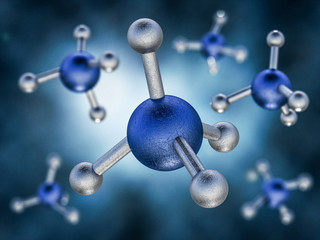Laws of Chemical Combination
Introduction and Laws of Chemical Combination
Have you seen rust shaping over metals? Is it accurate to say that it isn't simply so difficult to expel? Be that as it may, on the primary note how can it happen? Indeed, rust happens on account of chemical combination. Yet, what is a chemical combination? Give us a chance to discover!
Introduction
What do you understand by chemical combination? A combination response, named as blend response, happens when at least two reactants or constituents, consolidate to frame another item. Do recall that the resultant item would dependably be a compound. In science, there are four prime laws which are tolerated steadfastly.
Laws of Science
While picking up learning about science, one should calmly understand four essential laws that administer the procedure by which particles consolidate. These laws are referenced beneath:
• The law of the Preservation of Mass
• Law of Consistent Extents
• The law of Numerous Extents
• Law of Equal Extents
Law of the Preservation of Mass
Thinking about chemical responses, unadulterated combinations of various components named as mixes do get revised. Probably, in atomic responses, the core of molecules change. Taking a gander at the two cases, mass is safeguarded while new substances are made. How about we endeavor to understand this through a chemical just as atomic response. You'll perceive how mass when a response remains comparative.
Strong calcium responding With Hydrobromic Corrosive
Ca + HBr → CaBr2 + H2
One can see here that, there is single bromine and hydrogen present on the left side, though there are two iotas for every component accessible on the item side. Notwithstanding, this is unfeasible since one hydrogen iota and bromine can't be delivered out of anyplace. So as to indicate what really occurs there is a need to offset the condition alongside coefficients.
Ca + 2HBr → CaBr2 + H2
Do take note of that, the coefficient put before HBr will in general make the condition steady or adjusted for mass.
Law of Steady Extents
According to the law of steady extents, a similar kind of mixes will dependably hold a similar proportion of components. For instance, carbon dioxide will dependably hold the proportion of 1 carbon molecule to two particles of oxygen prompting the equation CO2. Besides, the proportion of mass likewise remains consistent. This law was confined and exhibited by Joseph Louis Proust in the year 1799.
Law of Numerous Extents
At the point when two components lead to the making of at least two intensifies, the proportion of the majority related to the second component in each compound can be indicated as little entire numbers. This is the law of various extents which was figured by John Dalton. You can see it to be a combination of different laws.
Law of Complementary Extents
Chemical combination and its resultants are very much expounded and supported with the previously mentioned three laws. The last law named as the law of complementary extents centers around the combination of two distinct components consolidating with a comparative amount of the third component. On the off chance that this occurs, the proportion at which the combination will happen remains the equivalent or a different of the unmistakable extent in which they consolidate. The law was proposed by Jeremias Ritcher in the year 1792.








No comments